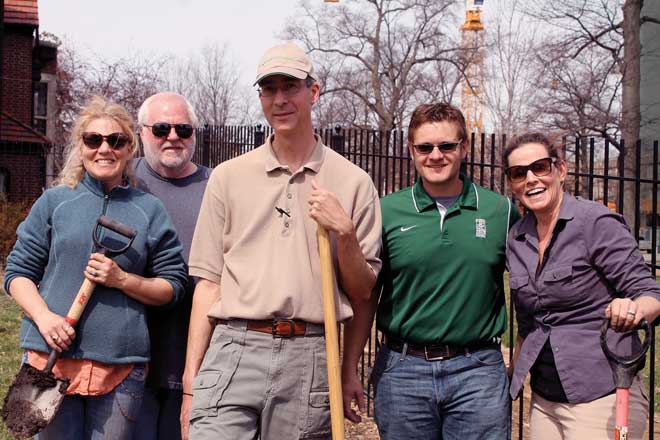Educating a child is a lot like growing a garden. Both have unique needs that must be understood and met. Both require loving care, patience and attention, and both need to be nurtured and shaped.
Forsyth School has been helping children bloom into their full potential since 1961. “By providing a challenging, engaging curriculum, a supportive atmosphere and opportunities for success, we help students cultivate their intelligence, talents and self-confidence,” says environmentalist and science teacher Gary Schimmelpfenig. “Teaching them to understand, appreciate and respect nature has always been part of our mission.”
One of many innovative ways students learn at Forsyth is through hands-on science activities like Back to Our Roots, a native plant initiative on school grounds. The project’s latest phase, a collaboration among students, parents, faculty and the St. Louis Audubon Society, began last year on the school’s newly expanded campus. “We’ve had a native habitat garden on the far eastern side of campus since 2007, but recently found ourselves with three additional areas of open land: the front and back yards of Next House, a historic home on Wydown Boulevard purchased for more classroom space in 2012, and a field on the western edge of campus, acquired in 2011,” Schimmelpfenig recalls. “So, working with our trustees, plant and land committee, and facilities manager Michael Mitchell and his team, we decided to continue beautifying our empty spaces in ways that give students more opportunities to interact with nature.”
Mitch Leachman, executive director of the St. Louis Audubon Society, gladly accepted when a past Forsyth parent and Audubon Society volunteer invited him to pitch in. “I led the plant selection and design effort for the front of Next House, and assisted with the songbird hedge along the west and north sides of campus,” he explains. The goal: to select sustainable, low-maintenance native plants, such as rose verbena, native dogwood, sumac, holly and vibernum, which attract hundreds of species of native birds and insects with food, shelter and breeding space. “Native woody plants, unlike popular ornamentals from Europe and Asia, provide food for butterfly and moth caterpillars, which in turn become critical protein sources for songbirds,” he says. “We also took care to choose some plants that flower across the entire growing season, for students to learn from and enjoy.”
Many of the plants were installed with help from students, says parent Megan Clinton, who contributed to the Next House landscape design with past parent Susan Pang. Both are graduates of Missouri Botanical Garden’s master gardener program. “I have three sons at Forsyth, and this ongoing effort heightens their awareness, curiosity and connection to the natural world,” Clinton says. “They’re learning that human beings are part of a larger, interdependent web.” The project enhances their education and development, and instills a passion for lifelong learning, she adds. “And it brings joy and beauty to everyone involved.”
Pictured: Susan Pang, Rick Davis, Mitch Leachman, Michael Mitchell, Megan Clinton
Photo: Phoebe Ruess
[Forsyth School, located at 6235 Wydown Blvd., hosts an open house on Sunday, Nov. 2. For more information, call 314.726.4542 or visit forsythonline.com.]
